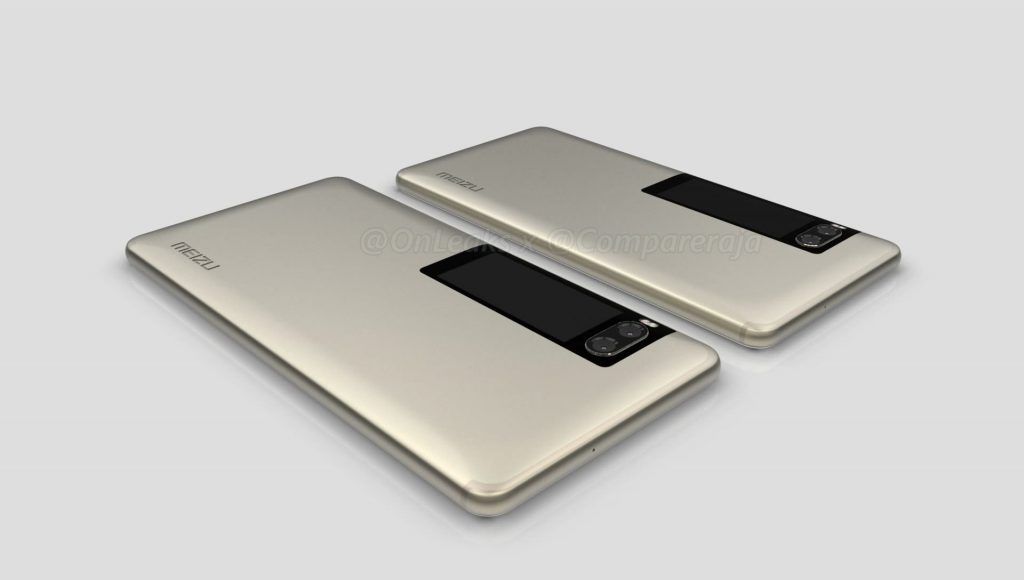We've been treated to plenty of leaks recently, and the latest devices to break cover are Meizu's next flagship phones, the Pro 7 and Pro 7 Plus. Thanks to serial leaker OnLeaks, in collaboration with Indian price comparison site CompareRaja.in, we're able to cast our eyes on renders apparently based on official CAD designs, as well as some details about the potential specs for the upcoming devices.
The renders show off what for the most part is a nice looking but uninspiring phone, particularly from the front. The back is a little more interesting, however. It's got a dual camera setup, for starters, unsurprising given that in 2017 it's almost a flagship standard. Below the camera module is where the real intrigue lies, with what looks like a secondary display. The source refers to this as a 2" E-Ink display, the kind used for showing you notifications and other contextual info without using too much battery power. There are conflicting reports out there that suggest this is actually an LCD panel, though, so we can't say just yet exactly what this is going to be. Secondary displays are nothing new, and they've mostly been disappointing. Meizu clearly thinks there's still some value in it, though, so let's see if they can implement it successfully.
We can also deduce from the images that the Pro 7 and Pro 7 Plus will have a home button with fingerprint sensor on the front chin, a USB-C port for charging, a single bottom-firing speaker, and a beloved headphone jack. Other details to emerge point to 5.2" and 5.7" SuperAMOLED displays (4K for the Pro 7 Plus and FHD for the Pro 7), a deca-core MediaTek Helio X30 SoC, and up to 8GB RAM. Imaging is said to be handled by a 16MP front camera and a 12MP Sony sensor on the rear, with OIS, LED flash, and 4K recording.
Pricing information was also mentioned. The base model Pro 7 with 4GB RAM is expected to cost around $410, and the Pro 7 Plus with the same 4GB RAM a little more at $500. The Pro 6 and Pro 6 Plus were out by this time last year, so we'd expect an announcement soon enough. Last year's Meizu phones followed a familiar pattern among low-cost Chinese handsets, with impressive hardware let down by a poor software experience. Let's hope Meizu can improve things this time around.
Source: OnLeaks, CompareRaja

